

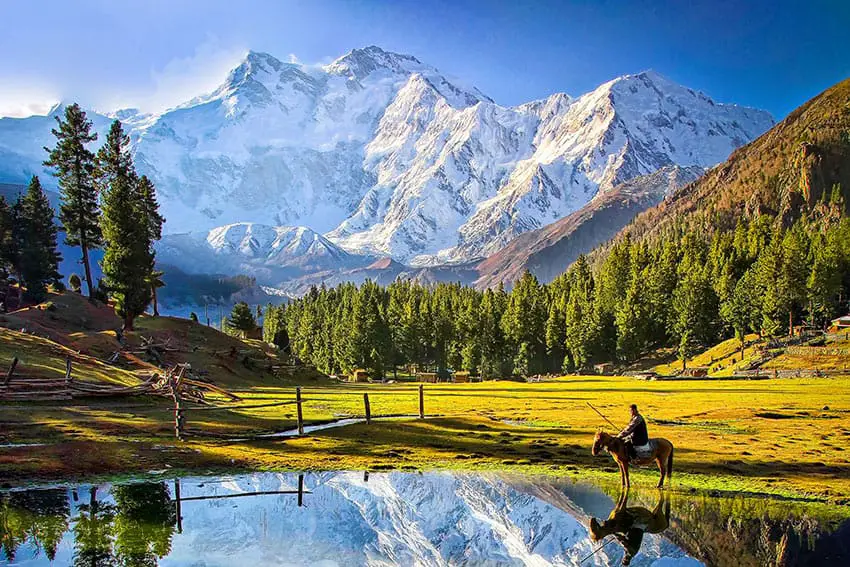
If you are a person with a fire in your belly for hiking and trekking adventures to discover new horizons from higher altitudes, then you will love a week-long trekking trip above 4000 meters!

Khadija Phool: A passionate hiker, an enthusiast swimmer, and a big-time tea addict who loves to explore new places, take up challenging tasks, and write about her love of life and adventurous experiences. If not on a mountain, or in water, you will either find me playing table tennis, reading a book, or trying something completely new on a vacation.
When I pushed for 4000 meters for the first time in my life, it felt like a daydream becoming a reality! I was so enthralled by the achievement that I kept longing for summiting higher peaks. Once you have set your feet at such a higher altitude, your soul is set on fire, flames flickering. There’s nothing like the high and lonely regions of the world.
But it’s not only about the sunsets and the sunrises or the smokey clouds around you at the top of the peaks. It’s more about what, as a human, have you accomplished, and how much have you evolved in your beliefs. It takes guts to get up here.
If you are planning your first ever week-long trekking trip with your friends, here is what you should know before you go!
By the way, I’m from Pakistan. I’m so lucky to have access to some of the most beautiful high-altitude regions in the world, such as the Himalayas, Hindu Kush and Karakoram mountain ranges. And in this article, I invite you to come explore my homeland with me!
Trekking is an arduous exercise of doing long walks (hiking) for days or weeks alone or in a group usually in the countryside or to the far-off mountainous regions. Don’t worry, it’s not a non-stop walking competition.
Trekking isn’t mountaineering or rock climbing. Those disciplines require special equipment and training. It’s the art of walking in the alpine environment.
For breaks and pauses, you establish camps at different sites where you cook meals and spend the night so you can start afresh the next day. Trekking requires strenuous efforts, smart backpacking skills, excellent stamina, survival equipment, and above all, good health!
Trekking isn’t mountaineering or rock climbing. Those disciplines require special equipment and training. It’s the art of walking in the alpine environment, which brings unique challenges like brutal weather, oxygen deprivation, geographic isolation and unforgiving terrain.
I found a home for my heart amid the beauty of the peaks. Trekking in the vast landscape of far-stretched mountains helped me unveil the medium that connected my soul with pure nature and its ferocious beauty. I discovered a way of rejuvenation as it turned out to be my ultimate passion. Most importantly, it helped me establish a focused mind.
I started with hiking to nearby hills, and my hunger for going beyond made me trek above 4,000 meters for the first time back in 2020. I trekked to the Nanga Parbat Base Camp 1 (Gilgit Baltistan, Pakistan) and since then I have been longing to go for Base Camp 2 which is further above sea level.
Either you are a teen with a taste for the rough trails, an adult with good fitness, or an experienced hiker, trekking above 4000 meters will be worth a challenge. The difficulty level of the trek entirely depends on your previous hiking skills, your ability to adapt to rough weather conditions, and of course on the steepness of the peak. With just the right skills and attitude, you are going to enjoy your first trekking experience!
First-time trekking in any terrain means entering into an unpredictable realm of Mother Nature. So, when you are not sure about the dangers of an area, it is better to take precautions and be prepared to encounter the unknown.
Watch this video for another trekker’s hike to Fairy Meadows, the most beautiful lookout in Pakistan!

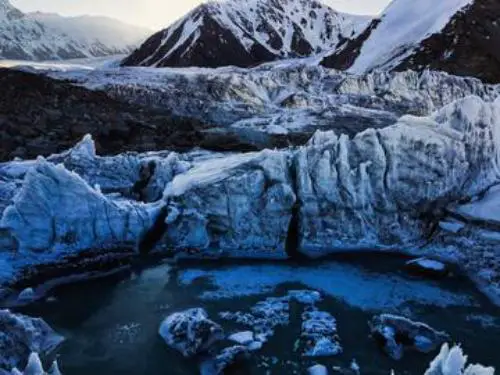
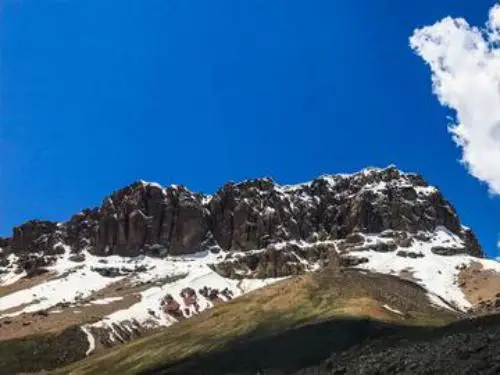

Trekking can be enjoyed anywhere across the world where there are alpines. For trekking above 4000 meters, you need to be very specific and selective in finalizing the trek and choosing the routes. If you are a beginner or an amateur alpinist, you should look for a 4000 meters+ trek that does not offer the challenge of steepness. For example, Nanga Parbat Base Camps (4000 meters and above) are challenging but not steep enough to cause you to lose your breath and legs at the same time.
Different trails offer you different environmental conditions. For example:
The weather conditions entirely depend on the month or season in which you are stepping out.
It can be extremely harsh and unbearable if you plan out a trekking trip in the months of winter such as November – January (in Pakistan).
The weather can be pleasant in the months of summer such as June and July (in Pakistan). For trekking above 4000 meters, always bear in mind that the temperature at higher altitudes is comparatively lower than the plain regions. It might be scorching hot on the land while it snows on the peak.
For your first week-long trekking above 4000 meters, the ideal time of the year would be midsummer. It will neither be blazing hot nor freezing cold at 4000 meters in summers when the sun shines at its best.
Things to do before the trip:
Maybe I’m biased, but Pakistan has access to some of the most stunning high-altitude peaks and plateaus in the world!
You can also find many trekking locations in the USA, Switzerland, France, Peru, and Italy, depending upon where you are located on the globe. Some of the best mountains above 4,000 meters outside of central Asia include the European Alps, North American Rockies and South American Andes.
For your first ever week-long trekking, you don’t need to travel to another country. Just try to find it in your homeland.

Northern Pakistan and the neighboring countries include India, Afghanistan and India are home to hundreds of the Middle East’s best treks. Some of the highlights include Moses Peak in the Karakoram mountain range, Deosai National Park, and Margalla Hills National Park. If you’re not Pakistani, you’ll generally fly into either Lahore or Islamabad.

Everest Base Camp (5600 m) in Nepal, K2 Base Camp (5,117m) in Pakistan, and many 5000 meters+ treks in Shimshal valley of Pakistan are ideal for serious trekkers. However, these high peaks of the Himalayas can be difficult or impossible to access with a guide.
To make your trekking experience a pleasant memory, you should acquire the following outdoor skills:
Trekking at 4000 meters above sea level is not like a walk in the park. This fascinating adventure comes with its risks.
Wherever you go trekking, you are definitely gonna spot some wildlife on the way. It could be innocent mountain goats, arrogant musk deer, or graceful yaks. There might also be signs of snow leopards, wolves, cougars, and bears. I was struck by the scary sight of a headless dead goat on my trek towards Nanga Parbat Base Camp. The local guide told me that leopards exist there, and I had witnessed the evidence.
As you ascend up the hill, the chances of encountering any deadly animals are rare because the temperature drops significantly lower and those animals can’t find any natural resources of food. That’s another case if they get to know about your arrival.
However, always do your research first and ask questions from your trekking guide so you keep your facts straight.

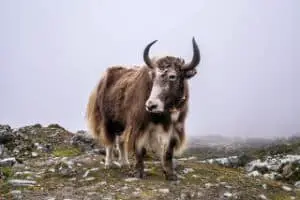
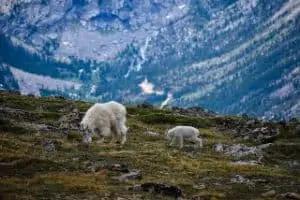
For trekking at a higher altitude, you should be in your best health and shape. Patients with asthma, arthritis and serious heart diseases cannot go on this expedition.
Eat healthy, and live healthy so you can witness the glory of the world from the top of the mountains.
Trekking above 4000 meters is not a joke. You should work out a physical training routine to build your stamina and to improve the flexibility of your body at least two months before you set out for a week-long trekking trip.

You should be able to complete a 10k without stopping. Focus on distance, not speed, as it’s endurance that will count in the mountains.

You must strengthen your core and shoulders to support the weight of a 15- to 30-kg pack. It is NOT something you can merely will your body through!

Bodyweight strength and muscular stamina training will increase strength without adding unnecessary muscle mass.
A week-long trekking to cross 4000 meters requires smart packing skills. Here is a list of gears that are required for it.
For navigation, use GPS or better keep a compass as the internet might not work often in remote areas.
Price:
The trekking gear should not cost you much.
Roughly it should be around $300 if you already have the mains i.e., trekking shoes, warm clothing, rucksack, hiking stick, sunblock, etc.
However, if you want to purchase the camping gear as well as all of the trekking items listed above, then it will cost you around $600 depending on where you are buying from.
I would suggest investing in good trekking shoes as your shoes are your true companions out in the wild mountains.
Price:
You can carry instant food such as noodles, rice, potatoes, bread, soup, or canned food such as beans etc.
Food does not cost much. You should keep a budget of $120 – $150 per week.
Choose nutrition with lots of carbohydrates for instant energy and lots of fats for energy reserve.
Avoid foods with high water content. These will add unnecessary weight.
Price:
It all depends on the distance of the trekking region from your hometown. For example, if I travel from Punjab to Raikot, I need to keep a budget of $90 – $110 while traveling in Pakistan 🙂
You can check out the transportation cost with the travel service providers in your region. For instance, roundtrip service to Islamabad from a U.S. international airport is usually $1,000 or more.
Price:
If camping is in the plan, it is not gonna cost you anything at all. It will be included in the package offered by the adventure club. Or even, if you are going on your own, just carry a camping kit with you.
Because you may not be able to find any den or a hotel at 2500 meters or above 4000 meters.
Price:
Consider a guided service! Some locations are not even accessible to single or unpermitted travelers.
One of the most popular is Hunza Guides Pakistan Tours Trekking & Expeditions. A 10-14 day tour usually costs around $1400 USD.
You can save a lot on your trekking gear and still have quality if you purchase from the stores that are selling items on sale.
Sharing the cost of meals is another smart saving trick.
If you can borrow trekking support gear such as trekking stick, headlamp, raincoat and even gaiters, then go for it. Just don’t act like an extravagant princess and spend all your saving on buying the new items unless you are going to continue this activity as a passionate alpinist.
Don’t get carried away by minor setbacks or mishaps on the way, if any. Remember to enjoy bonfires, live singing, and dancing when you are out there. Good memories are all you are going to recall when you return home!
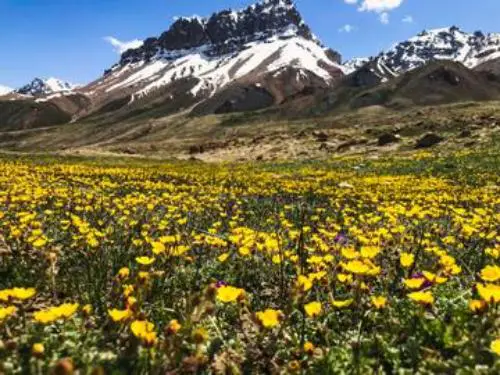

You shall not bring kids who are not trained for harsh weather conditions and rough trails.
If you are a person who seeks comfort, a kid below 8 years of age, or someone who doesn’t prefer long walks, then an adventure like trekking might be a nightmare for you …
It’s a rare case that you find a bathroom above 4000 meters. So you have to do it the old school way.
See Notes on transportation in the Finances & Budget section.
See notes in the “Where and When to Go?” section.
Yes! See “Miscellaneous” notes on budget. A guided tour is HIGHLY recommended – and maybe even required – for your trekking trip in northern Pakistan.
Yes! But don’t pile up 3-4 bags for a 7-days trekking trip. Traveling light is the key! You can hire porters to carry your other bag.
Copyright 2021 – Adventure on the Cheap (SRVS)
